Last year, Dodge announced that the new Hurricane inline-six would join the Direct Connection crate engine lineup, alongside various Hemi crate engines. Those who can’t get over the possible demise of the Hemi refuse to see any upside to the new Hurricane engine, but for those who are happy to have an internal combustion engine in the future of the brand, this engine presents an opportunity.
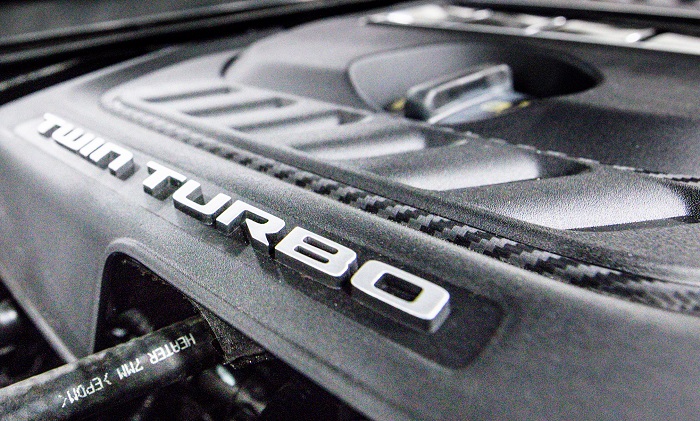
If nothing else, the fact that Dodge is discussing this engine is proof that the brand doesn’t plan to go all-electric in the immediate future. The trio of Hurricane crate engines, one of which is slated for the next generation Drag Pak car, shows that these engines will pack a serious punch.
The first production application of the Hurricane inline-six engine family was the Jeep Wagoneer and Grand Wagoneer. In the big Jeep, the “base” Hurricane pushed out 420 horsepower and 468 lb-ft of torque while the Hurricane 510 in the Grand Wagoneer delivers 510 horsepower and 500 lb-ft of torque. Those engines effectively replace the 5.7-liter Hemi in the Wagoneer and the 6.4-liter Hemi in the Grand Wagoneer, and each of the smaller engines pack more power than the V8s that they are replacing. The 5.7-liter Hemi in the Wagoneer offers 392 horsepower and 404 lb-ft of torque while the 6.4-liter Hemi in the Grand Wagoneer delivers 471 horsepower and 455 lb-ft of torque, so there are significant increases in both horsepower and torque when comparing the Hemi to the Hurricane in the Wagoneer line.
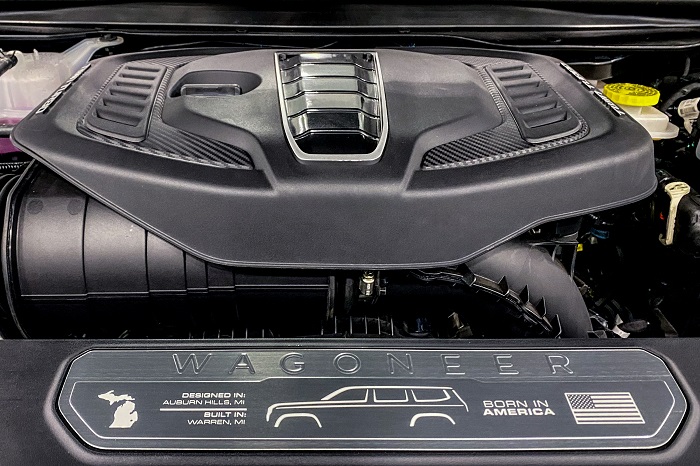
The two production-based Direct Connection crate engines are the HurriCrate Cat1 and the HurriCrate Cat3. The Cat1 is similar to the engine in the Wagoneer: a 3.0-liter engine running on 22 pounds of boost pressure to deliver 420 horsepower. The Cat3 is similar to the Grand Wagoneer engine, but there emust be some changes between the Jeep and Direct Connection crate engines, based on the preliminary power estimates.
Dodge has stated that the HurriCrate Cat3 will be a 3.0-liter engine running on 26 pounds of boost, just like the Grand Wagoneer, but the Dodge says that this engine could deliver up to 550 horsepower. That is a 40-horsepower increase over the Jeep numbers, but with the same engine displacement and boost pressure; we imagine that the Dodge version has some unique components on the intake or exhaust side (or both). It’s also possible that the Direct Connection HurriCrate Cat3 will simply have a more aggressive tune, yielding more power with the same boost levels.
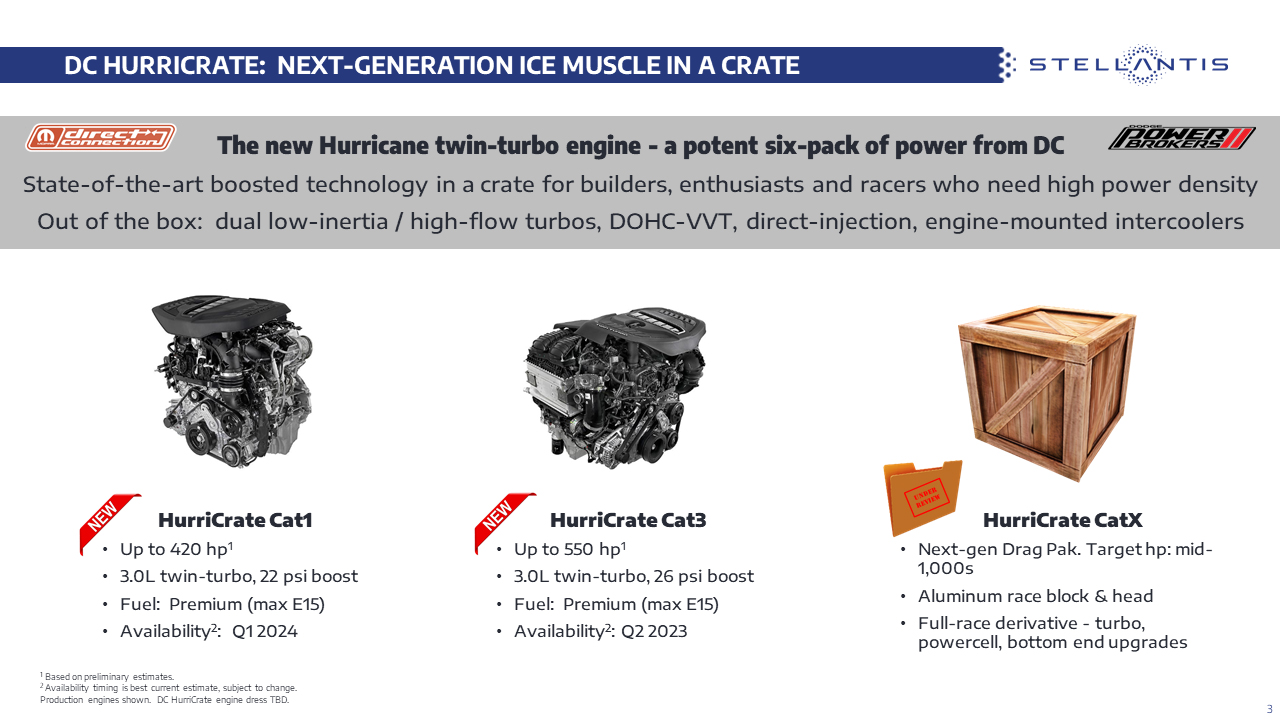
In short, the Hurricane-based crate engines from Direct Connection will offer a power advantage over the popular 5.7-liter and 6.4-liter Hemi crate engines when they are all in “stock” form from the manufacturer. However, while being smaller than the Hemi engines, these HurriCrate engines have a key advantage that makes it much easier to add gobs of power in a hurry – Boost.
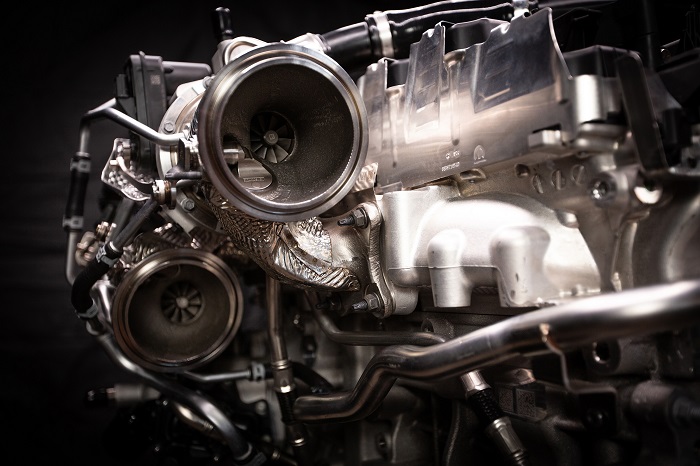
One of the reasons that the Hellcat Hemi has been so popular with the aftermarket crowd is that it is very easy to quickly increase the output by a large amount. By simply swapping the supercharger pulley, adding larger fuel injectors, and tuning the new combination, the Hellcat Hemi output easily climbs from the 700s to the 800s and with a few other relatively minor changes, the output of the blown V8 can climb comfortably over the 1,000 horsepower mark.
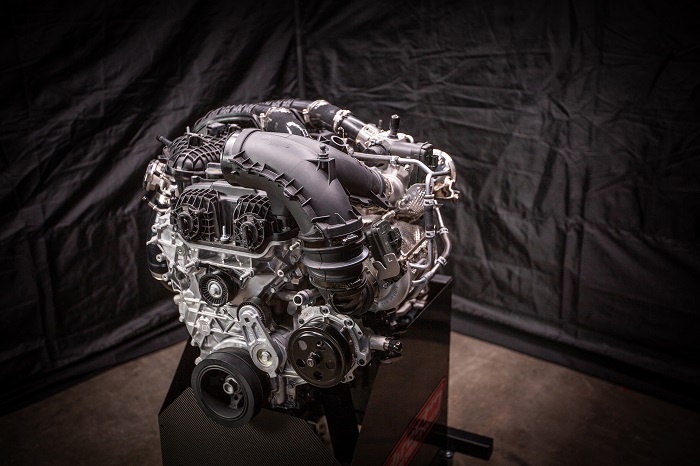
While the Hurricane engines are less than half the displacement, coming from the factory with forced induction will make it easier for owners to add power without many big changes. Increasing boost pressure with a turbocharged vehicle can often be done by adjusting the factory components or by adding a simple boost controller. Like a supercharger, a turbocharger has a maximum internal RPM and a maximum boost level; but the space between the turbo being maxed out and the “factory” boost pressure of 26psi leaves room for tuners to add power. As a result, the HurriCrate Cat3 could yield way more than 550 horsepower by increasing the boost pressure and adjusting the engine tune, while more elaborate changes to the fuel system and other engine components could allow the production-based 3.0-liter engine to produce Hellcat-like power in crate form.
Discover more from Stellpower - that Mopar news site
Subscribe to get the latest posts sent to your email.
